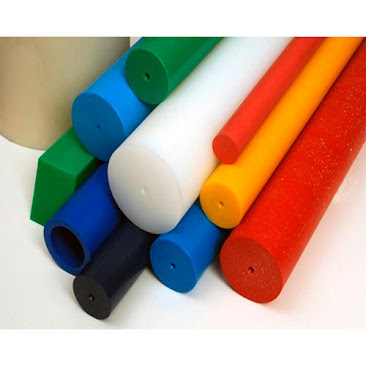Why Engineers Love High-Density Engineered Thermoplastic?
Noise and vibration are a part of all mechanical machines. The friction of different parts generates it. Along with iterating noise, vibration can also damage the inner circuit of any machine. Uncontrolled vibration reduces the lifespan of any machine and increases the wear and tear of internal parts.
high density polymers are best for vibration and noise reduction. Long chains of polymers act as a micro-cushion and absorb vibration waves. For this reason, most advanced OEMs and industries are using high-density thermoplastics for industrial equipment and mechanical parts.
What is high-density engineered thermoplastic?
It is a synthetic polymer designed to withstand high temperatures and absorb vibration. The density of this material can reach up to 11.0 g/cc. However, the biggest advantage of this material is its Flexural Modulus. Precision injection molding transforms it into any shape.
High density engineered thermoplastic is very durable, but they weigh much less than their metal counterparts. Therefore, they are the first choices for high-performance machines where the extra weight of the parts can be an issue. Heat deflection property makes it suitable for extreme conditions.
Application of high density engineered thermoplastic
Many engineers consider it as a wonder material. The non-toxic substance of this material makes it suitable for various industries. Here are some applications of this material that renowned industries have already accepted.
• Radiation Shielding
X-rays and Gama rays are very dangerous for human health. An excessive dosage of these rays can cause various diseases like leukemia. High-density engineered thermoplastic can shield these rays very easily. Hence, many healthcare industries are using this element for radiation shielding.
• Lead Replacement
Lead is a heavy metal used for various paint protection. However, one drawback of this metal is its poisoning capability. This metal can easily dilute in the human bloodstream and cause long-term physical damage. High-density engineered thermoplastic can be used in place of Lead or other toxic metals.
• Vibration Damping
Vibration is kinetic energy that comes from the mechanical operation. Along with irritating noise, vibration also causes micro-fracture to the mechanical parts. As a result, it reduces the life-span of machines. Many OEMs have chosen it as a Vibration damping material for reducing wear and tear on the parts.
• Frangible Projectiles
The origin of high-density engineered thermoplastic can be traced back to the military-industrial corporation. This material was first invented as a lead replacement for bullets. The non-toxic substance of this material is not harmful to the environment. The high strength of this material also produces less bullet ricochet.
Price of high density engineered thermoplastic
Compared to various metals, the price of high-density engineered thermoplastic is very reasonable. However, various physical properties can inflate its price. The price of this material starts from $2. The addition of different physical properties like heat-deflection, impact strength, or tensile strength may increase its price up to $30.
Currently, most industries are operating at their heights level of performance. In this scenario, using conventional elements will never give you an upper hand in the business. Thus, new materials like high-density engineered thermoplastic have become the favorite choice of engineers.






Comments
Post a Comment